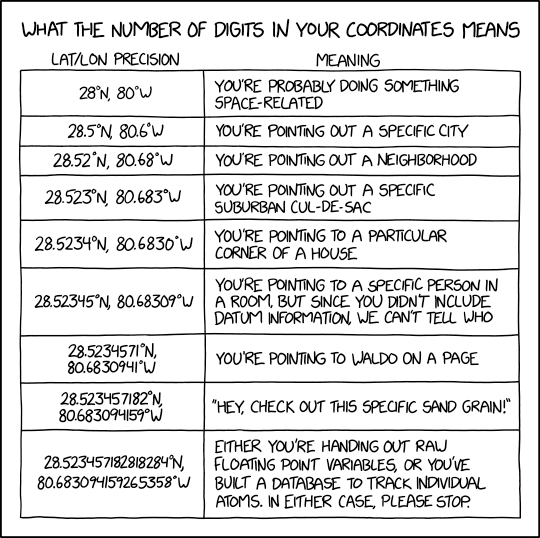-
Notifications
You must be signed in to change notification settings - Fork 1
New issue
Have a question about this project? Sign up for a free GitHub account to open an issue and contact its maintainers and the community.
By clicking “Sign up for GitHub”, you agree to our terms of service and privacy statement. We’ll occasionally send you account related emails.
Already on GitHub? Sign in to your account
Telescope z positions are raised 10.5 m higher #43
Comments
|
I don't understand, the coordinates here: lst-sim-config/config_LST1_2MAGIC_diffuse_gammas.cfg Lines 83 to 85 in 793c549
are intended to be the centers of rotation of the mirror dishes (all within 1 m of the corresponding dish center). The fourth column is the sphere radius, which should completely contain the telescope. See https://forge.in2p3.fr/issues/35807#note-98 I don't think there is any need to shift the sphere to be above ground. Anyone knows why is that done? |
I think this is needed for the ray-tracing code going back from position on the ground to the position where the photon might have it the telescope, but not sure. I remember reading about this requirement before but couldn't find it when I now quickly searched in the corsika manual and the iact/simtel docs |
|
Hi @moralejo. The code in corsika/bernlohr/iact.c checks if ztel - rtel < 0 and if so raises all the telescopes by the difference. The effect is as @YoshikiOhtani said that the entire sphere around the telescope is above the ground level. I guess this is to avoid a situation when e.g. a photon crosses the horizontal plane containing the telescope center at a distance of a bit more than the radius of the sphere (so the photon is lost and not tracked more), but the continuation of the path "underground" would cross the sphere so the photon should have been kept. |
So you mean the photons are tracked only to ground level, and if the track has not intersected the sphere by then they are ignored. I don't understand why that requires to modify explicitly the input telescope coordinates, but ok... In any case this will make no difference whatsoever. I would be fine with eventually doing the change proposed by @YoshikiOhtani, but not now that we are in the middle of the all-sky production. |
|
Investigating the transformation between lon / lat height values (i.e. an
Due to how sim_telarray and CORSIKA work and the locations / properties of the telescopes I would thus propose the following:
This gives us the locations in lat/lon/height of the telescope center of rotation: The observation level has to be lower than these points minus the radius of the light sphere of each telescope. So I would propose to put the observation level at:
To transform from the simulation frame to/from earth locations, I opened this PR in ctapipe: cta-observatory/ctapipe#2167 and added the same code temporarily to Here is the full script performing the calculations, both with astropy and with pyproj, which should be the same as the transformations done before using the import numpy as np
from astropy.coordinates import EarthLocation, AltAz, ITRS
import astropy.units as u
from pyproj import CRS, Transformer
from ctapipe_io_lst.ground_frame import ground_frame_from_earth_location
tels = [
dict(
name="LST-1",
loc=EarthLocation(lon=-17.89149701 * u.deg, lat=28.76152611 * u.deg, height=2199.883 * u.m),
area=23**2 * u.m**2,
),
dict(
name="MAGIC-1",
loc=EarthLocation(lon=-17.8900665372 * u.deg, lat=28.7619439944 * u.deg, height=2195.363 * u.m),
area=17**2 * u.m**2,
),
dict(
name="MAGIC-2",
loc=EarthLocation(lon=-17.8905595556 * u.deg, lat=28.7613094808 * u.deg, height=2197.364 * u.m),
area=17**2 * u.m**2,
),
]
areas = [tel["area"].to_value(u.m**2) for tel in tels]
ref_lon = np.average([tel['loc'].lon.deg for tel in tels], weights=areas)
ref_lat = np.average([tel['loc'].lat.deg for tel in tels], weights=areas)
ref_height = 2180 * u.m
print(f'Reference location: {ref_lon:.6f}°, {ref_lat:.6f}°, {ref_height:}')
print("Transformation using pyproj")
crs = CRS.from_dict(dict(
proj='tmerc',
ellps='WGS84',
lon_0=ref_lon,
lat_0=ref_lat,
axis='enu',
units='m'
))
proj = Transformer.from_crs(crs.geodetic_crs, crs)
for tel in tels:
proj_easting, proj_northing = proj.transform(tel['loc'].lon.deg, tel['loc'].lat.deg)
# x_proj is west -> east, y_proj is south -> north.
# ground frame is x->north, y -> west
x_proj, y_proj = proj_northing, -proj_easting
z_proj = (tel['loc'].height - ref_height).to_value(u.m)
print(f"{tel['name']:10s} x={x_proj: 7.3f} m, y={y_proj: 7.3f} m, z={z_proj: 6.3f} m")
print()
print("Transformation using astropy")
ref = EarthLocation(lon=ref_lon * u.deg, lat=ref_lat * u.deg, height=ref_height)
for tel in tels:
ground = ground_frame_from_earth_location(tel['loc'], ref)
print(f"{tel['name']:10s} x={ground.x: 7.3f}, y={ground.y: 7.3f}, z={ground.z: 6.3f}")Results in (and this is what I would propose for the new locations (the astropy version to be consistent): |
|
The reference location should also be set using the metaparams, which will be used by ctapipe to automatically add this information to the See e.g. the file |

Just in case let me report one thing that I have found (sorry if it is already reported somewhere...).
In the CORSIKA input cards, the telescope positions are defined as follows:
lst-sim-config/config_LST1_2MAGIC_diffuse_gammas.cfg
Lines 83 to 85 in 793c549
However, when I opened one of LST-PROD2 simtel files I get the positions whose z coordinates are a bit raised:
And then I looked into the log file and see the following sentences:
It seems that the positions are raised so that the entire spheres defined at the telescope positions are above z = 0. I think it doesn't harm anything, but it would be good to modify the positions in the input card to make them consistent between input and output.
The text was updated successfully, but these errors were encountered: